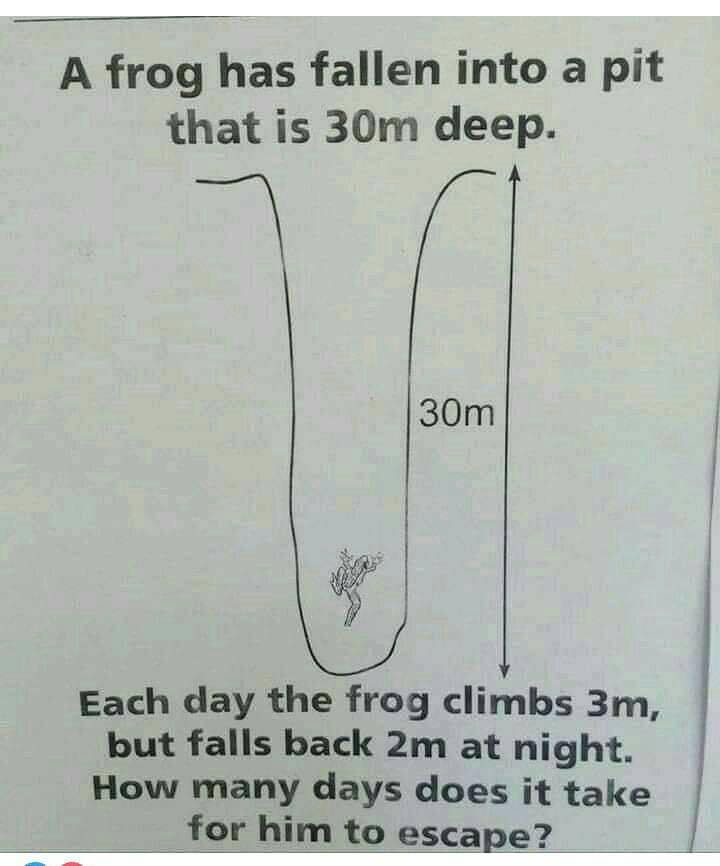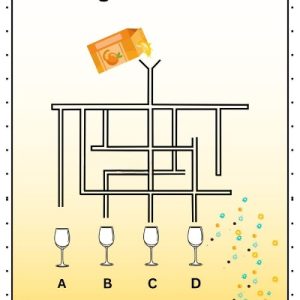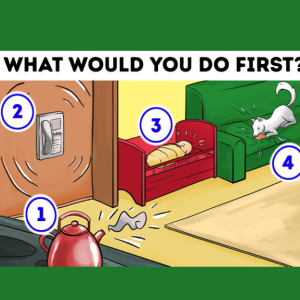Riddles have been around for centuries, entertaining people of all ages with clever twists and surprising solutions. But beyond the fun, riddles offer something deeper: they train our brains. Think of them as a workout for your mind—flexing your reasoning, boosting creativity, and sharpening focus.
When you solve a riddle, you aren’t just answering a question. You’re developing cognitive skills that can be applied to everyday life. Let’s take a closer look at one of the most popular logic puzzles: the frog in the pit.

The Classic Frog Riddle
Here’s how the puzzle goes: A frog is stuck at the bottom of a 30-meter deep pit. Each day, it climbs 3 meters up. But at night, it slips back down 2 meters. How many days will it take for the frog to finally escape?
At first, the answer might seem straightforward. Many people assume it’s 30 days, since the frog only makes 1 meter of progress each day. But when you break the problem down, the solution is much more interesting.
Video: A frog has fallen into a pit that is 30m deep.Each day the frog climbs 3m, but falls back 2m at nigh
Step-by-Step Breakdown of the Puzzle
The key is to notice the frog’s progress before it reaches the very top.
- Each day, the frog climbs 3 meters.
- Each night, it slips back 2 meters.
- This means the frog makes a net gain of 1 meter per day.
By this logic, after 27 full days, the frog will have climbed to 27 meters. On the 28th day, it climbs 3 meters straight to the top and escapes—without sliding back that night.
The answer: 28 days.

What This Riddle Teaches Us About Thinking Differently
This puzzle shows how easy it is to jump to conclusions when we don’t think carefully. If you only look at the “net 1 meter per day” calculation, you might overlook the fact that the frog escapes before sliding back on the last day.
The riddle reminds us to slow down, consider each step, and check our assumptions. This is exactly the type of mindset that helps us solve bigger real-world problems—whether in school, work, or everyday decision-making.
The Cognitive Benefits of Solving Riddles
So why should you care about riddles like this one? Because they train your mind in ways that matter. Some of the biggest benefits include:
- Better problem-solving skills: You learn to break challenges into smaller, manageable steps.
- Sharper logical reasoning: Riddles force you to analyze information and find patterns.
- Improved memory: Many puzzles require remembering details or sequences.
- Stronger creativity: You’re pushed to think outside the box and explore new perspectives.
- Increased focus: Concentrating on solving a riddle improves mental discipline.
Riddles as a Tool for Everyday Growth
Video: 11 Hard-to-Solve Riddles from the 18th Century
Engaging with riddles doesn’t feel like hard work—it feels like play. Yet behind that playful exterior, they teach patience, perseverance, and strategic thinking. They also spark curiosity. A single puzzle can inspire you to look at problems from different angles, encouraging flexibility and adaptability.
Think of riddles as small investments in your long-term mental health. Just as you exercise to keep your body strong, you challenge your brain with puzzles to keep it sharp.
The Bigger Picture of Brain Teasers
The frog riddle is just one example of how a simple problem can carry powerful lessons. There are countless riddles out there—some based on math, some on wordplay, and others on pure logic. Each one nudges your brain to stretch in a slightly different way.
Whether you’re tackling a classic puzzle or trying a modern brain teaser, the reward is the same: a stronger, more flexible mind that’s ready to handle life’s challenges.
Conclusion: A Small Puzzle with a Big Lesson

The riddle of the frog in the pit is more than just a fun question. It’s a reminder of how careful thinking, patience, and attention to detail can reveal the right answer. Beyond entertainment, riddles help us grow intellectually, sharpening skills that apply to school, work, and personal life.
At the end of the day, riddles are more than clever puzzles—they’re stepping stones to cognitive growth. They challenge us, teach us to think critically, and remind us that sometimes the solution is just a different perspective away.


